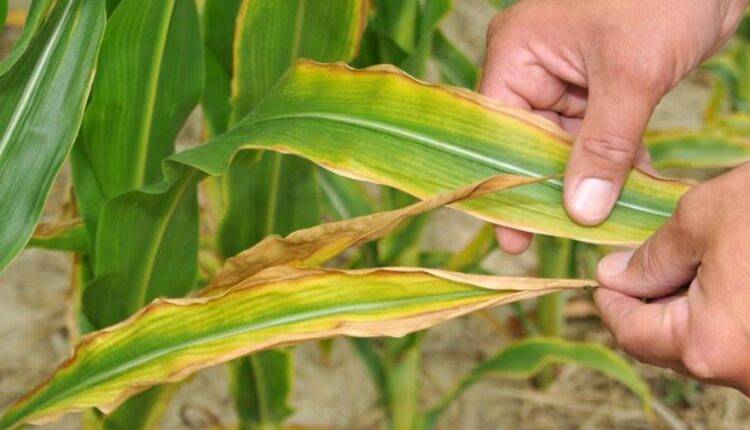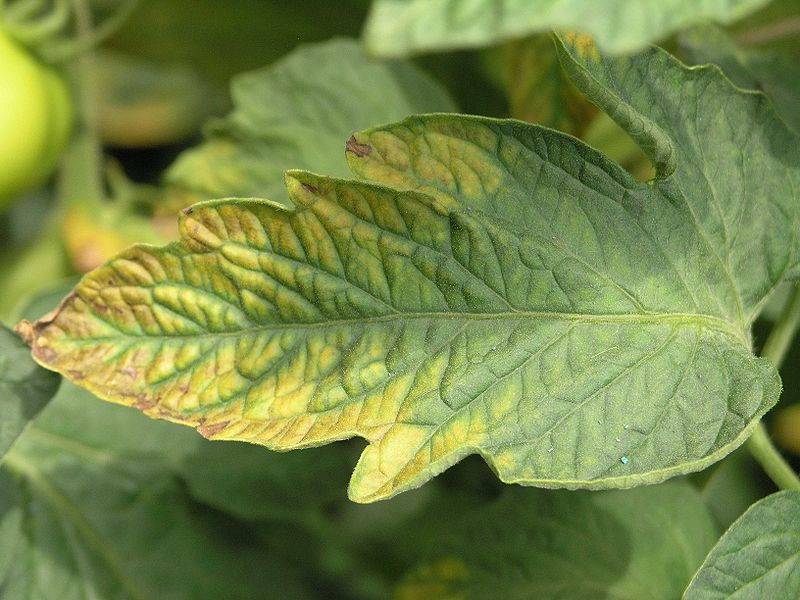Soil Nutrients: Know the effect on crops
In what ways are the symptoms of nutrient deficiency visible on plants?
In the previous article related to soil nutrients, you have read about the nutrients found in the soil, so now we must know what is the effect of these soil nutrients on the growth and yield of the crop and what are the symptoms of deficiency of these elements. You can read the previous article here
Soil Properties: Better soil health and better crop production, how soil becomes a treasure trove of nutrients?
Soil Nutrients :
1. Nitrogen (N): Nitrogen plays an important role in the growth and development of all living tissues of plants such as roots, stems, leaves and flowers. It is also an important factor in the production of chlorophyll, protoplasm, proteins and nucleic acids. Due to deficiency of nitrogen, the leaves of the plants start turning yellow from their tips. This effect is first visible on the old leaves, but later the young leaves also start turning yellow. The stem of the plant looks short, thin and malnourished and its growth is stunted. Flowers and fruits are less in number or they start falling soon. Cereal grains also get less and smaller. Nitrogen is given by spraying in the fields or directly in the soil. Spraying of 3-4 percent solution of urea on the leaves after weeding in the standing crop is also beneficial when the symptoms of nitrogen deficiency appear on the crop.

2. Phosphorus (P): Phosphorus is very essential for the growth and development of seeds of plants. It plays the role of an essential element for the division of cells and is also useful in the development of roots. Phosphorus is also an essential component in the formation of nucleic acids, proteins, phospholipids and amino acids. Phosphorus also helps plants withstand climatic stress and harsh summers and winters.
Due to the lack of phosphorus, the development of the roots of the plants stop, the colour of the leaves become dark green and the edges become rough, the old leaves start drying towards the ends and their colour becomes copper like or purplish-green, less number of fruits in the crop. and the number of grains decrease. The stem of the plants turn yellow when there is an excess of phosphorus.
Farmers mainly know Phosphorus by the name of DAP. DAP also contains other nutrients. Application of DAP mixed with compost before sowing increases the availability of phosphorus to plants. SSP, DAP and rock phosphate are used to supply phosphorus.

3. Potassium (K): Potassium is mainly helpful in the development of fruits of the crop. Due to this, the size of fruits or grains become bigger and shiny and their quality increases. Potassium also plays an important role in promoting the process of photosynthesis in plants in the harsh weather or cold and cloudy weather. It increases the disease resistance of plants or the ability to tolerate adverse conditions and the activity of enzymes. This helps in the transfer of carbohydrates, protein synthesis and maintaining their stability.
Due to the deficiency of potassium, fruits and seeds do not develop properly and their size becomes small, shriveled and the colour becomes lighter. The leaves are small, thin and dry towards the end, turns brown and curl. Older leaves appear scorched on the edges and tips and start drying from the edge. Stems become weak and plants are more susceptible to diseases. Potassium deficiency should be applied on the basis of soil test report before sowing. Spraying of 2 to 4% solution of potassium sulphate in the standing crop is also beneficial.

4. Calcium (Ca): Calcium is a major component of the cell wall. It is essential for cell division and provides stability to cell membranes. This increases the activity of enzymes. Calcium neutralises the toxic effects of organic acids in plants and helps in the translocation of carbohydrates.
Young leaves of young plants are the first to be affected by calcium deficiency. They are often small and unusually dark green in colour. The tip of the leaves become hook shaped. With this, calcium deficiency can be identified very easily. Apart from this, the development of the roots is badly affected and the roots start rotting. If there is excessive calcium deficiency in the soil, then the upper part of the top buds of the plants dries up and the buds and flowers fall before they are ready. At the same time, the structure of the stem starts to weaken.

5. Magnesium or Magnesium (Mg): Magnesium is the main element of chlorophyll. Without it, photosynthesis or food production is not possible in plants. It increases the activity of many enzymes involved in carbohydrate-metabolism, synthesis of nucleic acids, etc. and accelerates the absorption and transfer of phosphorus.
Due to deficiency of magnesium, the older leaves turn yellow from the edges and along the veins and the middle part as well. This happens due to high deficiency. Even the affected leaves dry up and start falling. In some vegetable crops, yellow spots develop between the veins and eventually become bright orange, red and pink spots. The leaves are usually small in size and hard in the last stage and start turning inwards, then the branches become weak and start attracting fungal diseases. New leaves fall before they develop.

6. Sulfur or Gandhak (SO4): Sulfur plays a major role in protecting the plant from diseases and helping it grow. They also aid in production of amino acids, proteins, enzymes, vitamins and chlorophyll. It contributes to vitamin K metabolism. Sulfur also plays an important role in root growth, seed formation and development of root nodes of pulse crops.
Due to the deficiency of sulfur, the plants become yellow, green, thin and small in size and their stem becomes thin and hard. To overcome the deficiency of sulphur, the use of SSP, Phosphorous Gypsum and Sulfur mixed fertilizers before sowing in the fields is beneficial.

7. Zinc or Zinc (Zn): Zinc is very helpful in the use of phosphorus and nitrogen in plants. It helps in nucleic acid and protein-synthesis, contributes to the biological synthesis of hormones. Zinc is also an essential part of many mineral enzymes. Zinc deficiency results in reduction of stem length and curling of leaves. Inter nodal spacing decreases, earing is delayed and crop maturity is delayed.
Zinc deficiency is responsible for Khaira disease in paddy and white bud or spot disease in maize. After germination, the old leaves of maize start turning white due to zinc deficiency, then red or brown spots are formed on the leaves of paddy and the growth of the plant stops. To remove zinc deficiency, 25 kg of zinc sulphate should be given to the fields per hectare before sowing or its 1.0 percent solution mixed with 0.25 percent lime should be sprinkled.

8. Copper (Cu): Copper plays an important role in the production and growth of vitamin A in plants. It is a component of many enzymes.
9. Iron or Iron (Fe): Iron is required for the synthesis and maintenance of chlorophyll in plants. It also plays an important role in the metabolism of nucleic acids. Iron is also an essential component of many enzymes. Due to the lack of iron element in the soil, green colour starts fading between the veins and near the leaves. Young leaves are first affected by this. In case of severe iron deficiency, the whole leaf and the inter-veinal part turn yellow.

10. Manganese (Mn): Manganese regulates the activities of plant cells in light and dark conditions. It increases the activity of enzymes involved in nitrogen metabolism and synthesis of chlorophyll and many important enzymes in plants. It helps in the operation of cellular process. Also, as a result of the oxidation of carbohydrates, carbon oxides and water are formed.
Manganese deficiency causes yellowing of the inter veinal areas of young leaves and death of affected leaves. Young leaves turn gray near the base, which gradually turns yellow and then orange. Due to the deficiency of manganese, diseases like ‘grey speck’ in cereal crops, ‘marsh spot’ in peas and ‘steak’ in sugarcane occur.

11. Boron (B): Boron is an essential element for protein synthesis. It affects cell division and plays an important role in carbohydrate formation and contributes to its transport. Boron also affects the absorption and utilization of calcium in plants and changes the activity of enzymes. The crop yield is greatly reduced due to the deficiency of Boron.
Boron deficiency symptoms are usually seen in young leaves. These leaves become thick and hard, turn downwards and the stem dies. Similar symptoms are seen in paddy, brown disease in cauliflower, yellow fungus disease in garlic, Shikhar disease in tobacco and hardness in citrus fruits. The top part of the plants of beet, carrot, cauliflower dies and buds start coming out from the side. The stem of the leaves starts dying and the leaves start turning yellow.
12. Molybdenum or Molybdenum (Mo): It is a component of many enzymes and helps in nitrogen utilization and nitrogen fixation. Molybdenum is also necessary for Rhizobium bacteria in nitrogen fixation. That is why molybdenum deficiency is especially visible in pulse crops. Molybdenum deficiency causes yellow spots to appear in the center of the veins in the lower leaves. Later the edges of the leaves start drying and the leaves turn inwards. Cauliflower leaves get torn apart. Such tail-like leaves are called ‘hip tail’.

13. Chlorine or Chlorine (Cl): Chlorine is also an essential component of plant hormones. Chlorine plays an important role in increasing the water-holding capacity of leaves. It replaces indoleacetic acid in seeds and increases the activity of enzymes. Chlorine is an essential component of many compounds found in fungi and bacteria. Due to the lack of chlorine in the soil, the tip of the leaves withers and eventually turns red and dries up.
Contact us: If farmers want to share information or experiences related to farming with us, then they can do this by calling us on the phone number 9599273766 or by writing an email to kisanofindia.mail@gmail.com or by sending your recording. Through Kisan of India, we will convey your message to the people, because we believe that if the farmers are advanced then the country is happy.

